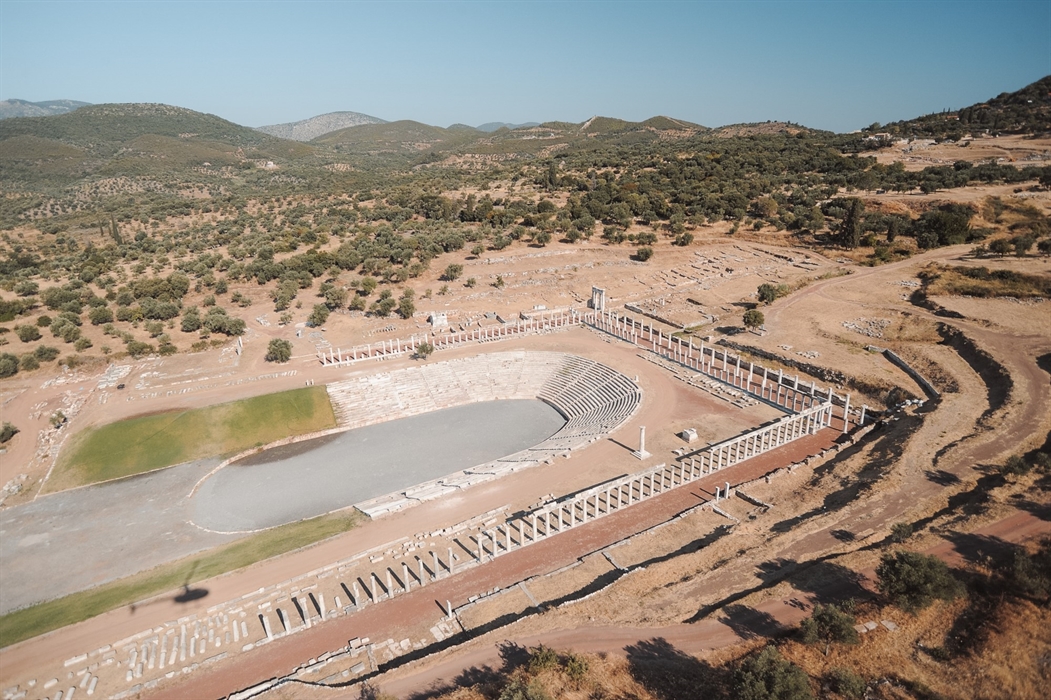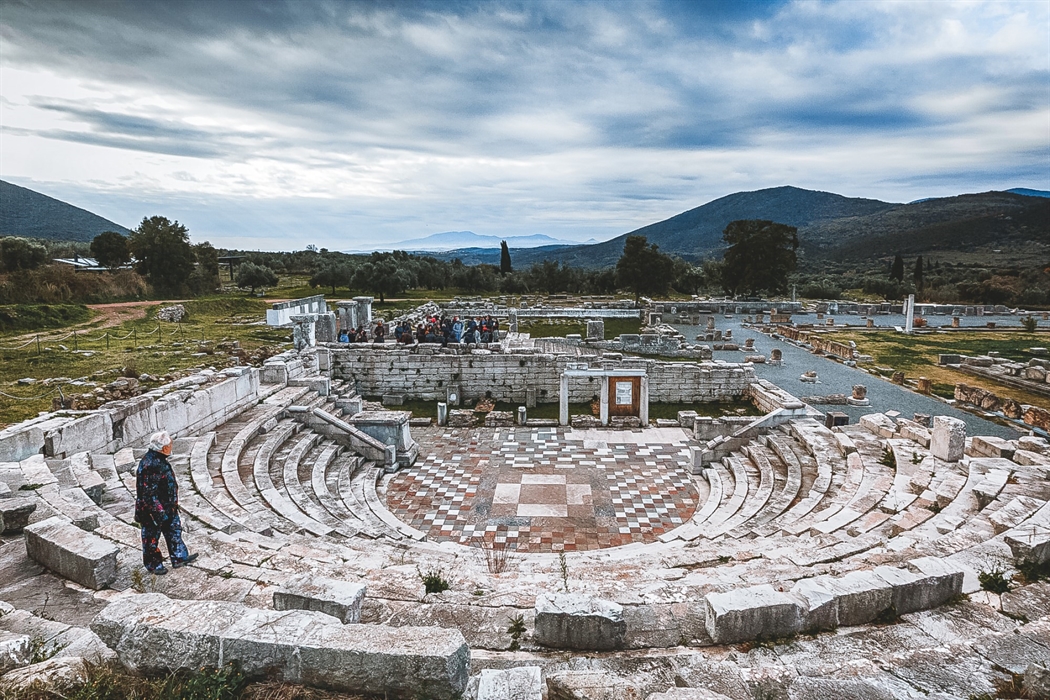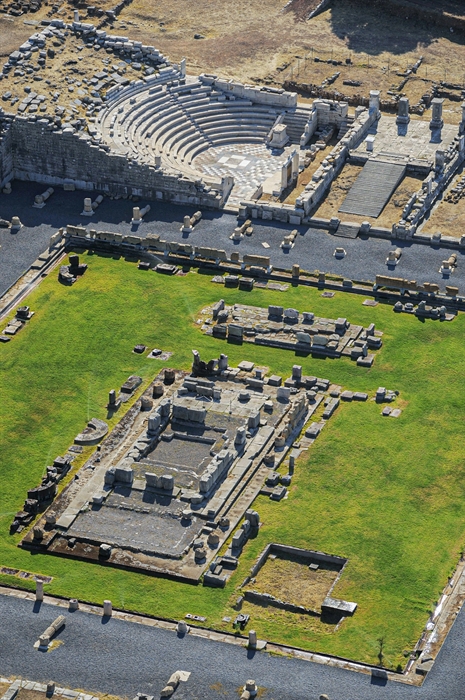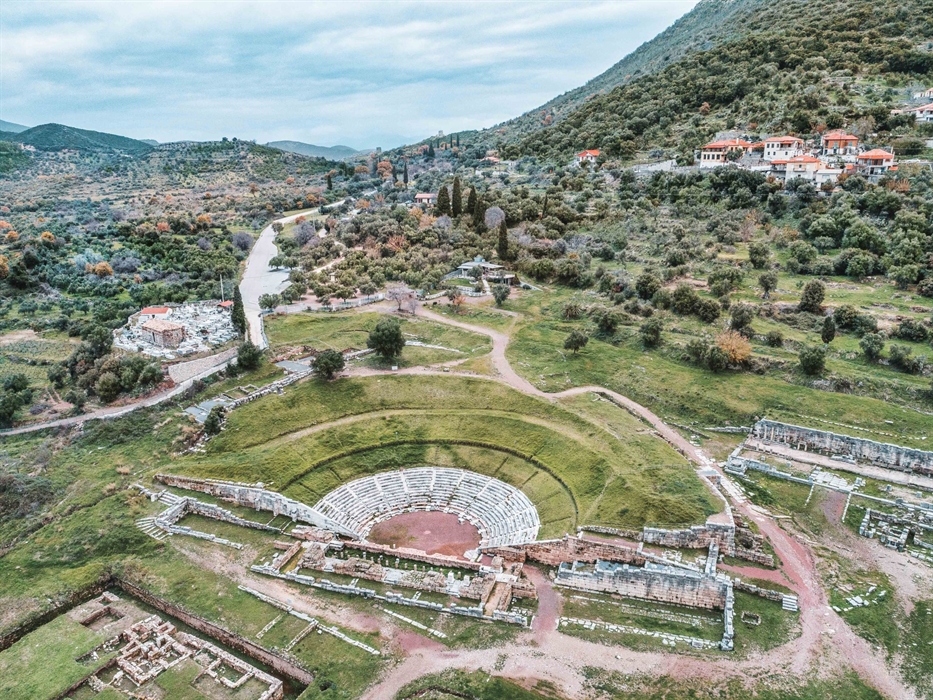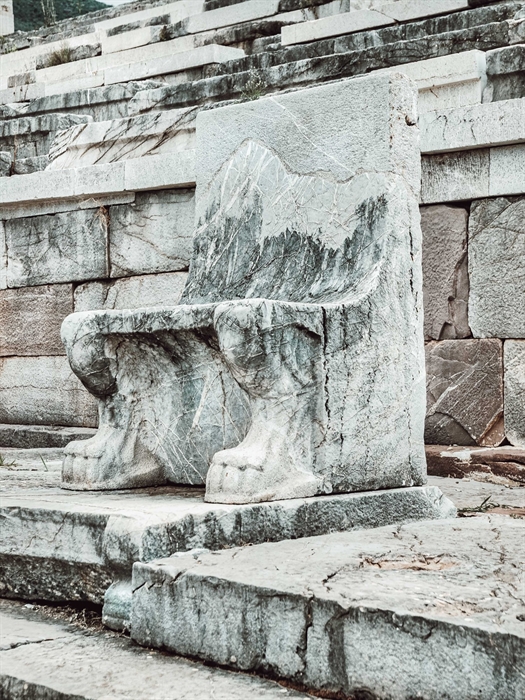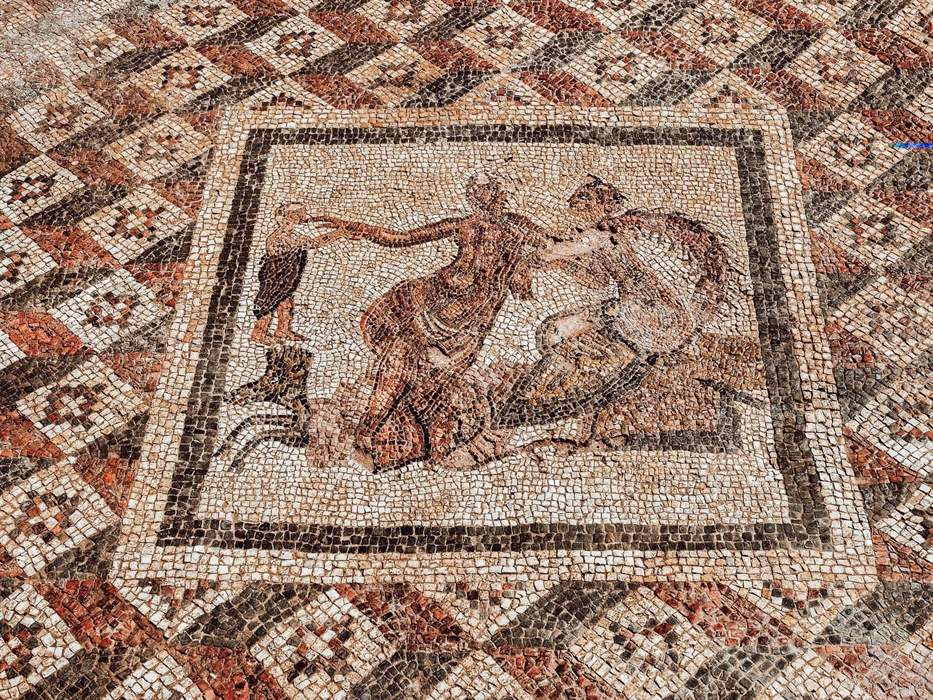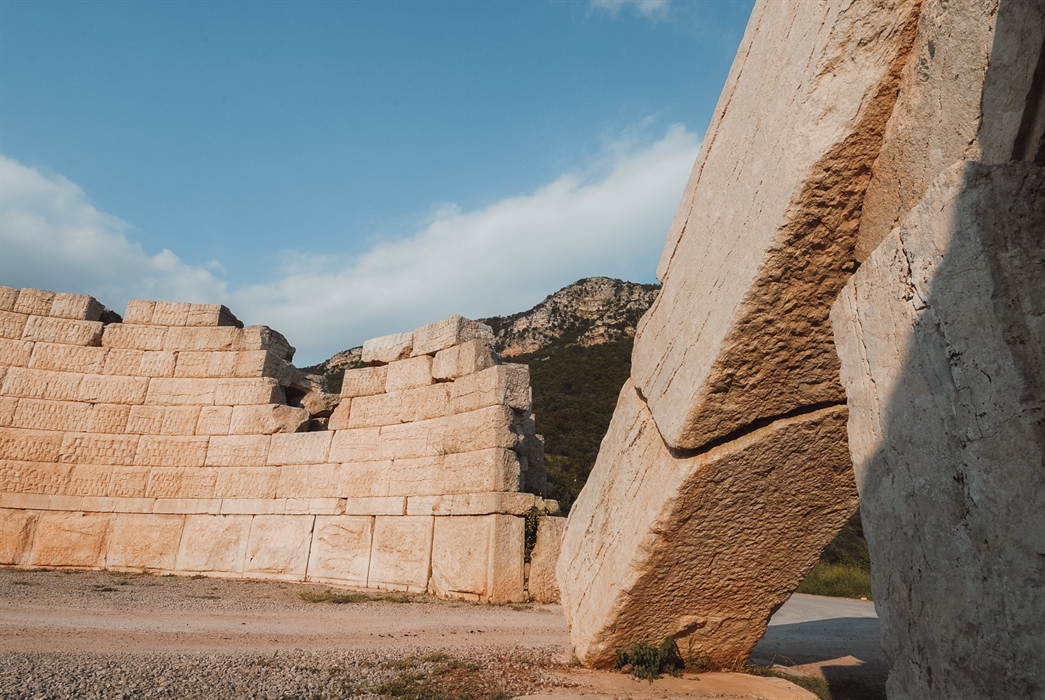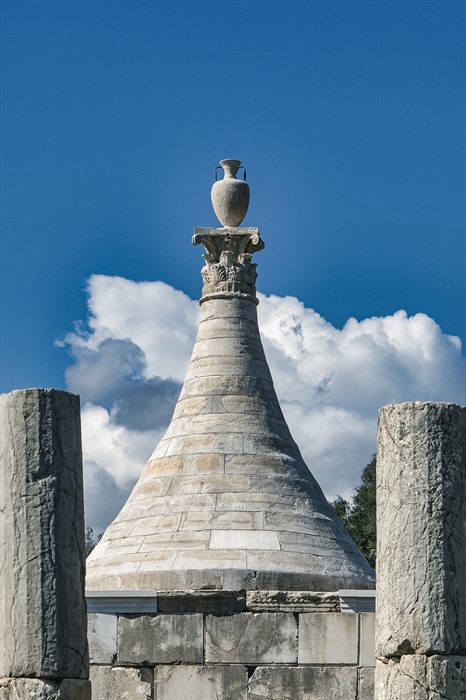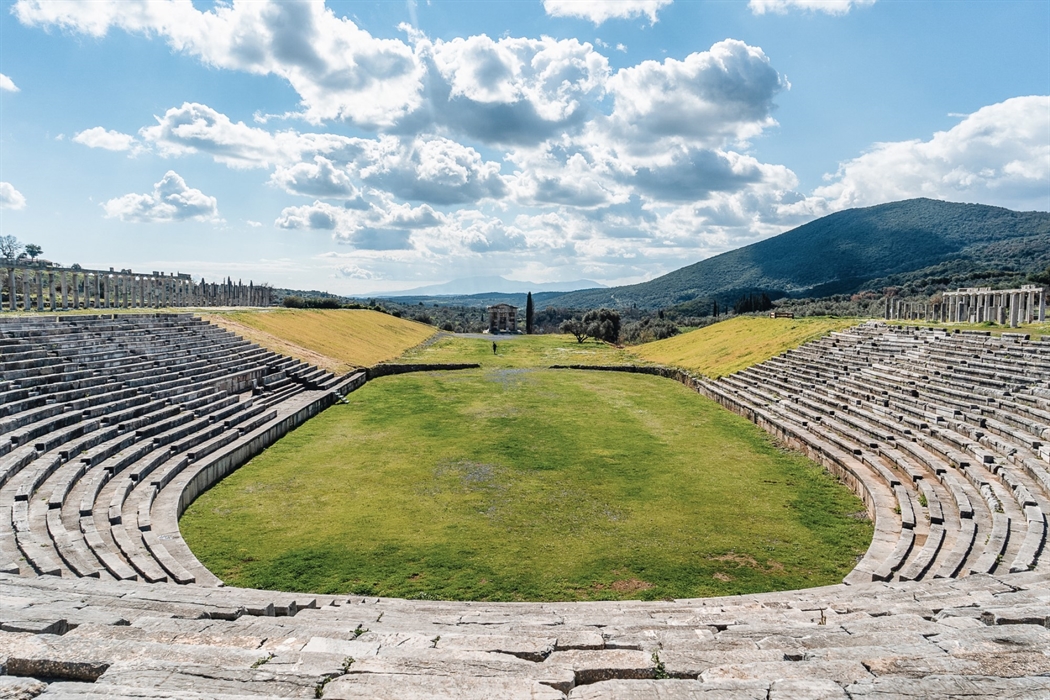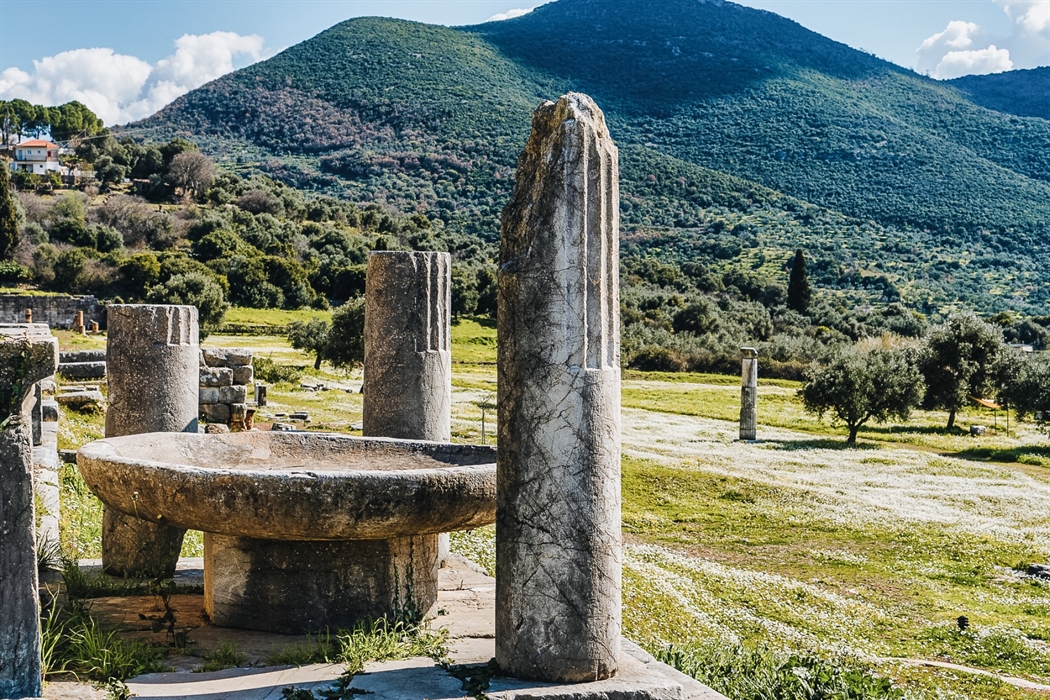Ancient Messini
If you are in Messinia, make a point of visiting the Ancient Messini archaeological park near Kalamata. It’s in a beautiful setting in the hills and olive groves, and you can spend hours wandering around one of the best preserved and most important cities of antiquity. As the majestic ruins testify, Ancient Messini was a political, cultural, religious, economic and social force to be reckoned with in its heyday.
Ancient Messini archaeological park is located near Kalamata in a beautiful setting in the hills and olive groves. As the majestic ruins testify, Ancient Messini was a political, cultural, religious, economic and social force to be reckoned with in its heyday and, as it is one of the best preserved and most important cities of antiquity, you can spend hours wandering around the site and imagining it in all its past glory. The city enjoyed a long period of prosperity, even after the Roman occupation in 146 AD.
The city was built in 369 BC by the Theban general Epaminondas, after his victory over the Spartans at the battle of Leuctra and his invasion of Laconia. The site was chosen as it was located under mount Ithomi which acts as natural protection and fortification.
The city walls surrounded both the city and the mountain with the sanctuary of Zeus Itomatas (9th-8th centuries BC) and the Sanctuary of Artemis Limnatis and Eileithyia (3rd - 2nd century BC). The walls must have been truly impressive as they were 9 km long and almost 3 m thick, and not only did they keep the Spartans out, sections of the walls also managed to survive thousands of years of history.
When they were built, strong two-storey towers and ramparts were placed at intervals along the wall, and there were four entrance gates named according to where the roads running through them led.
The main surviving gate is the Arcadian Gate which is now incorporated into the modern road network! It was a symbol of power and an excellent example of fortification techniques. Not surprisingly, it made a considerable impression on the travelling geographer Pausanias in the 2nd century AD and, centuries later, on the first European travellers. You can still walk or drive past the square two-storey defensive towers, through the gap in the huge walls and into the spacious circular centre of the gate. In ancient times, the exit led to a road that took travellers to the Arcadian capital, Megalopolis, and the double entrance in the gate led to a cobbled road which took people to Ancient Messini’s Agora. Even today, you can still follow their footsteps and go through the double inner entrance to the ruins of the city itself. The circular interior of the gate was decorated with columns topped by a sculpture of Hermes who was the protector of the gates (Hermes Propylaios).
Funerary monuments were discovered outside the Arcadian Gate and it is thought they were used during the 2nd, 3rd and 4th centuries A.D. as burial places for prominent families of the city.
Once you have gone through the gates and arrived at the archaeological park itself, you’ll see that it’s a huge site. The ruins of the public and religious buildings are often in a remarkably good state, given that they are thousands of years old. Indeed, quite a few have been partly restored so you can get an idea of what they would have looked like in the past.
THE MONUMENTS
The Asklepiion complex (3rd - 2nd century BC) with the Doric temple of Asklepios.
A series of monumental buildings, such as the Odeon, the council chamber or Bouleuterion, the Theatre, the Arsinoe Fountain, the Agora, the Stadium and the Gymnasium.
An extensive set of funerary monuments, such as the restored monumental Saithid Mausoleum (1st century BC-1st century AD).
Luxurious Roman mansions with mosaic floors
RELIGIOUS MONUMENTS
The area was known as Messini until the 8th century, and then became known as Voulkano. In the 10th century, Saint Nicolas the Penitent, tried to convert the Slavic tribes that lived there to Christianity. As a result, a series of churches were built at the end of the 10th - 11th century. Some of these are still standing in Mavrommati: Agios Ioannis Riganas church in the village, Fragoklissi in the archaeological site itself, Klisa Kouke near the entrance to the archaeological site, and Klisti Porta near the Arcadian Gate.
The Old Voulkanou Monastery which is dedicated to the Dormition of the Virgin is another landmark in the area. It is right on the top of Mount Ithomi, at the point where the ancient sanctuary of Zeus Ithomata stood. When the church was built, a lot of remains from the ancient sanctuary were incorporated into the building. The church has frescoes painted by the Moschos brothers in 1608.
The excavations Systematic excavations of Ancient Messini began in 1895, and since 1986 Petros Themelis and his team have been managing the excavation. The professor has dedicated his life’s work to the excavation and restoration of the monuments, and to the archaeological park overall.
Statues, inscriptions and other finds from the excavations are exhibited in the Archaeological Museum of Ancient Messini.
Texts from the website of the Ephorate of Antiquities of Messinia and the official website of the Municipality of Messini.
Did you know that
The restored Stadium was inaugurated in August 2009 with a concert of the celebrated Greek tenor Mario Frangoulis. Events are still held here, and in the ancient theatre.
The archaeological park covers more than 400 sqm. There are paved routes, information boards and shaded areas.
The duration of a full tour is about 3 hours.
Location
Find the destination on the interactive map below.
Σχετικό περιεχόμενο χρηστών (UGC)
Ενημερωθείτε για ενδιαφέροντα θέματα γύρω από τον προορισμό μέσα από το περιεχόμενο των χρηστών μας
Newsletters
- About Us
- FAQ's
- Map
- Tourism Information Centers
- Disclaimer
- Sitemap
- Our Brand
- Media Room
- Add your Business
- Corporate
- MICE

Peloponnese. Greece beyond the obvious





Design and creation from Cosmote
Marinas and Moorings
Diving Centers
Get Inspired
- Media Gallery
- Peloponnese Travel Blog
- The Peloponnese in the Media
- Your Feedback
- Users' General Content
- Users' Local Products
- Users' Events Content
- Ask a Local
More
- My peloponnese vibe
- Our providers Network
- Destinations Map
- Weather
- Public Transport
- Frequently Asked Questions
- Useful Phones
- B2B
- Destination Statistical Data
- Contact

